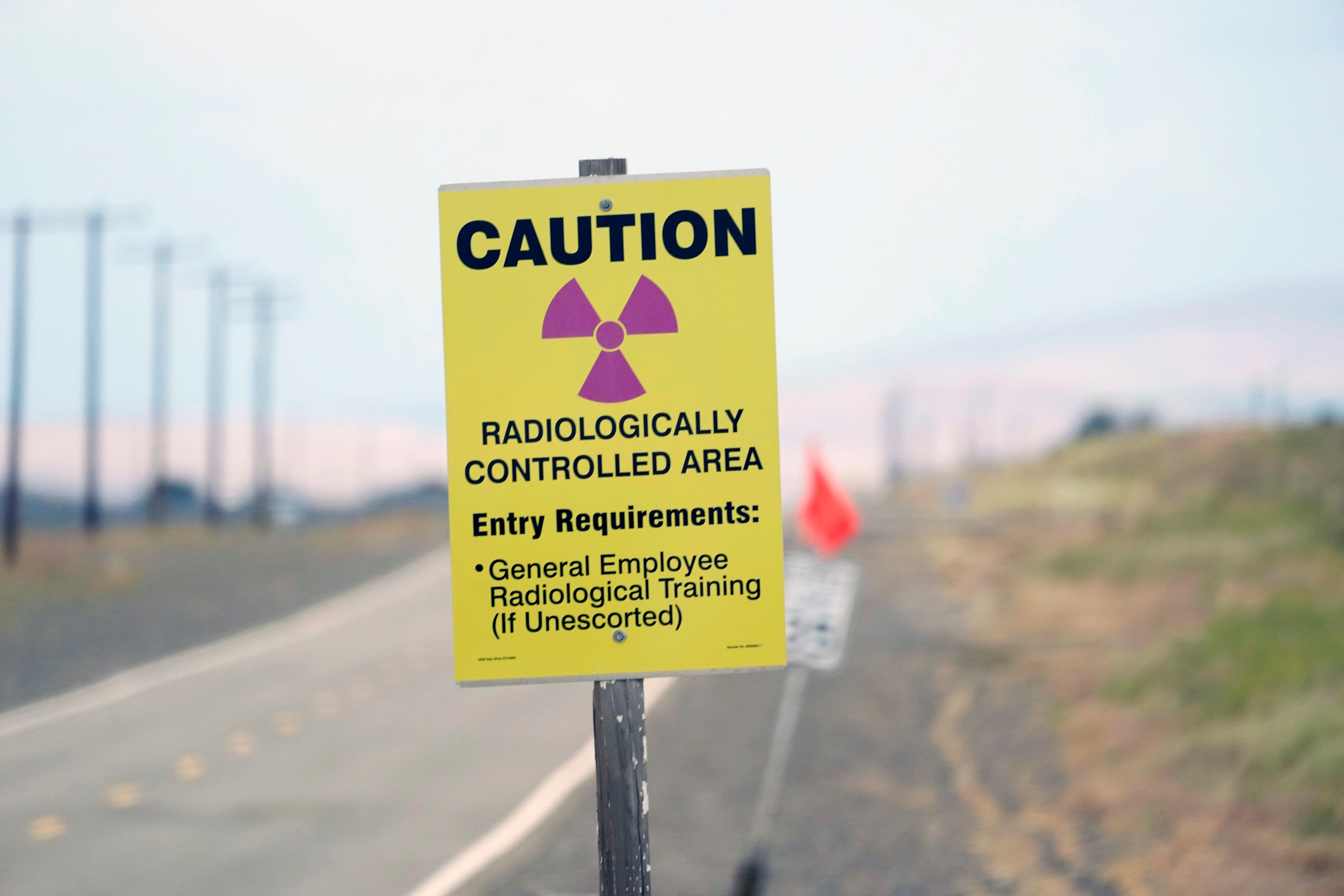Deal reached to address 2 leaking nuke waste tanks
A deal to address two nuclear waste storage tanks that are leaking radioactive materials into the soil in Washington state has been reached between Washington state and the U.S. Department of Energy

Your support helps us to tell the story
From reproductive rights to climate change to Big Tech, The Independent is on the ground when the story is developing. Whether it's investigating the financials of Elon Musk's pro-Trump PAC or producing our latest documentary, 'The A Word', which shines a light on the American women fighting for reproductive rights, we know how important it is to parse out the facts from the messaging.
At such a critical moment in US history, we need reporters on the ground. Your donation allows us to keep sending journalists to speak to both sides of the story.
The Independent is trusted by Americans across the entire political spectrum. And unlike many other quality news outlets, we choose not to lock Americans out of our reporting and analysis with paywalls. We believe quality journalism should be available to everyone, paid for by those who can afford it.
Your support makes all the difference.A deal to address two nuclear waste storage tanks that are leaking radioactive materials into the soil in Washington state was reached Thursday between the state and the U.S. Department of Energy.
The waste is left over from the production of plutonium for nuclear weapons on the Hanford Nuclear Reservation near Richland, Washington.
From World War II through the Cold War, Hanford produced more than 70 tons of plutonium, including for the atomic bomb dropped on Nagasaki, Japan, at the end of World War II. When plutonium production ceased in 1989, the site’s mission shifted to cleaning up the chemical and radioactive waste left behind, including 56 million gallons of waste stored in 177 giant underground tanks.
The Department of Energy announced in April 2021 that Tank B-109 was leaking waste into the surrounding soil. Tank T-111 was discovered to be leaking in 2013.
“It’s been a priority for the state of Washington to address leaking tanks in a way that protects nearby communities and the Columbia River,” said Ecology Department Director Laura Watson. “We know that ongoing vigilance and commitment will be needed to fully address these risks."
But state Rep. Gerry Pollet, D-Seattle, a long-time Hanford critic, noted the deal could allow the tanks to leak for years.
"Letting a high-level nuclear waste tank continue to leak for years or decades is a dereliction of our state’s duty to protect our Columbia River, protect our groundwater, to enforce our most fundamental hazardous waste laws and adds to the history of violating Treaty rights at Hanford," said Pollet, director of watchdog group Heart of America Northwest.
The Department of Energy manages the nation's largest collection of radioactive waste, located on the 580-square mile (1,502 square kilometer) Hanford site, which is about 200 miles (322 kilometers) southeast of Seattle.
Under the agreement, the Energy Department will:
—Cover the T and B tank farms with surface barriers to prevent rain or snowmelt from seeping into the tanks, and to slow the migration of leaked waste toward the groundwater.
—Develop a response plan for future leaks from older single-walled tanks, some of which date to World War II.
—Evaluate the viability of installing a ventilation system to evaporate liquid waste in Tank B-109.
Tank B-109 holds about 123,000 gallons of waste (465,605 liters), with about 13,000 gallons (49,210 liters) of residual liquid form. T-111 holds an estimated 397,000 (1,502,808 liters) gallons of waste; about 37,000 gallons (140,060 liters) is liquid waste within sludge.
The Energy Department estimates Tank B-109 is leaking about 560 gallons (2,120 liters) of waste per year, and Tank T-111 is leaking about 300 gallons (1,135 liters) per year. The agency estimated it could take 25 or more years for waste from Tank B-109 to reach groundwater, and 70 or more years for Tank T-111 waste to reach groundwater.